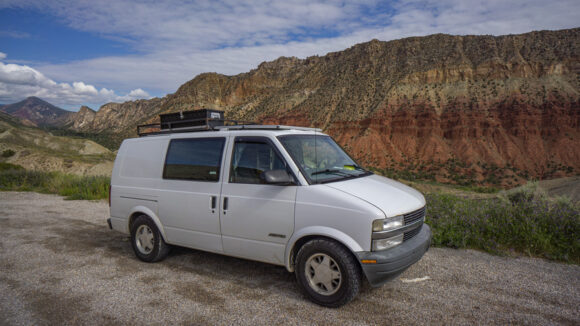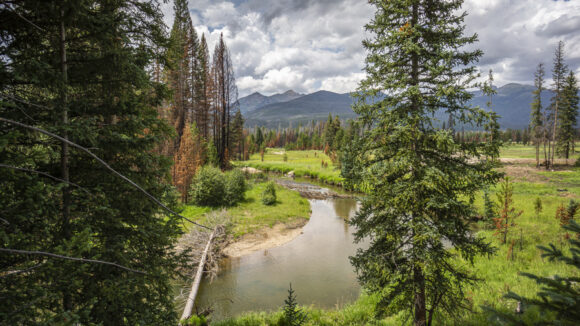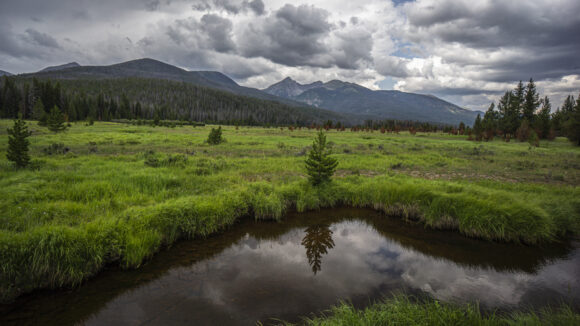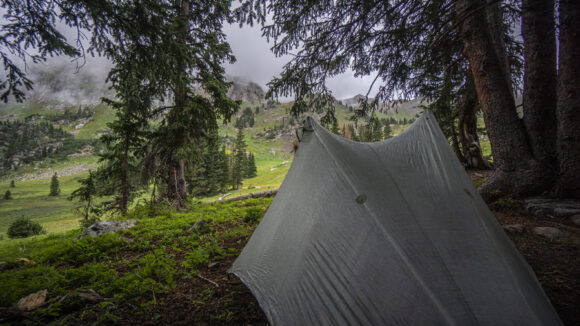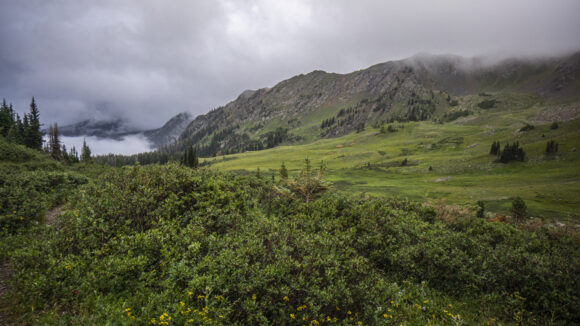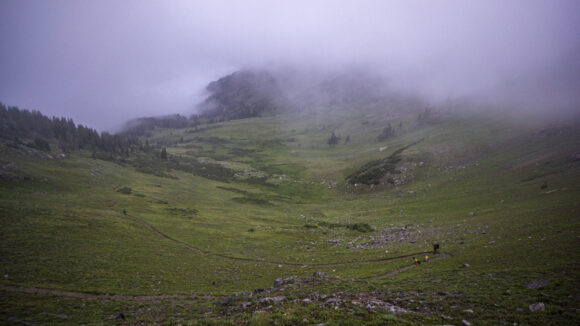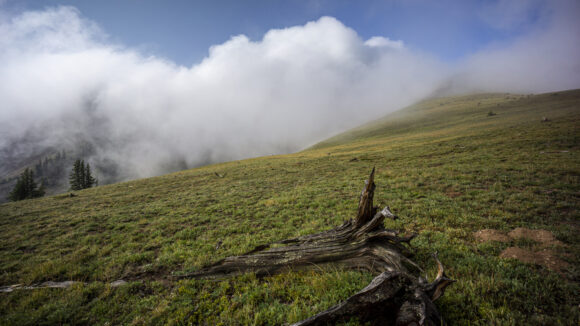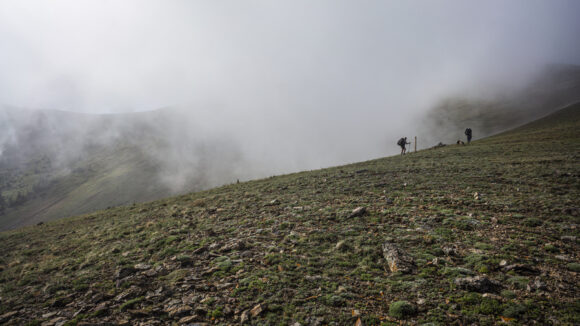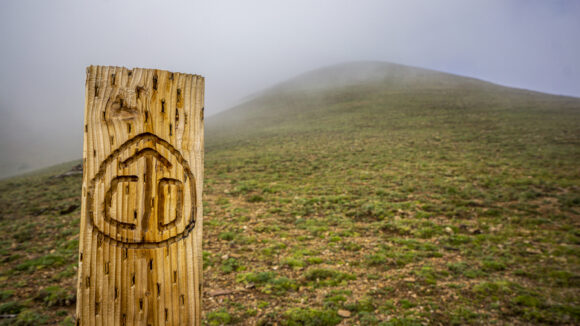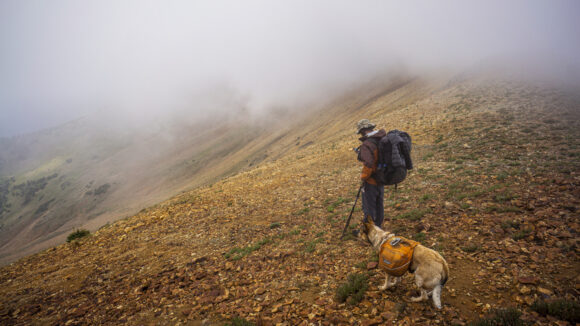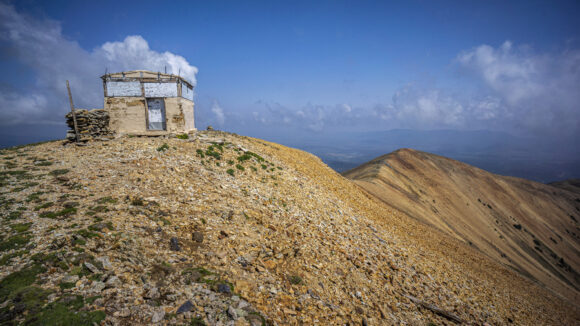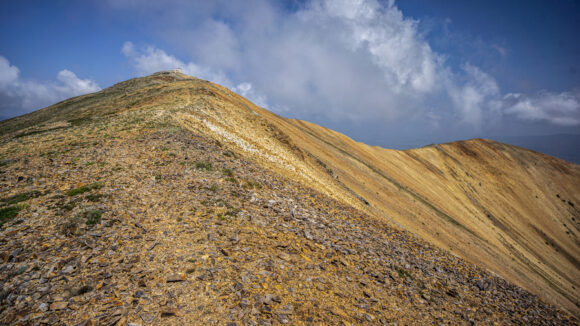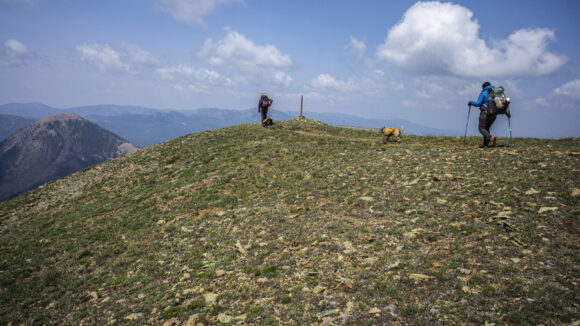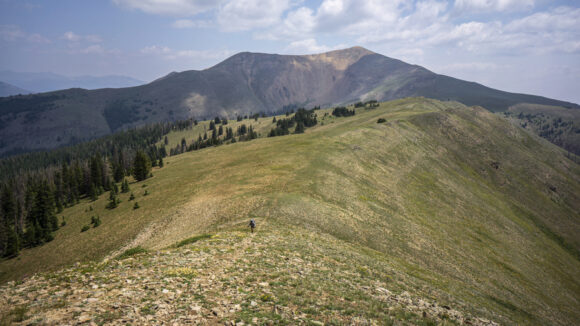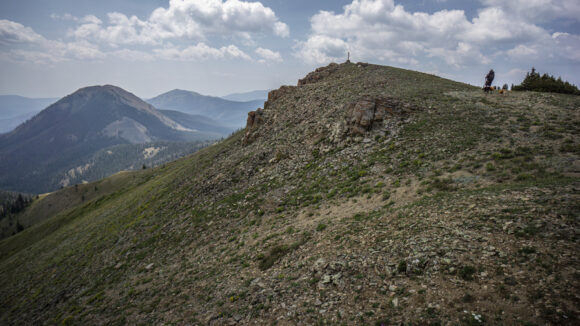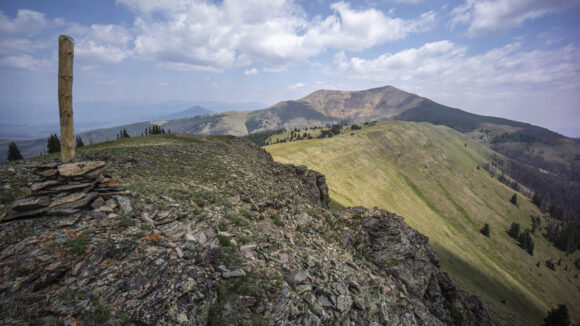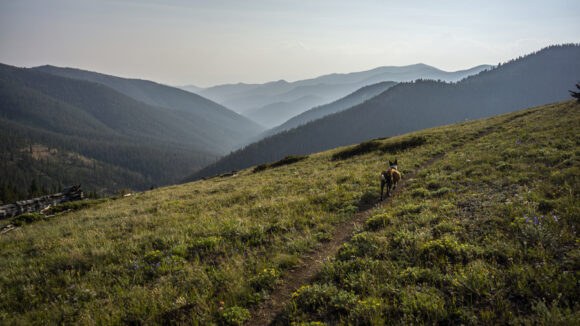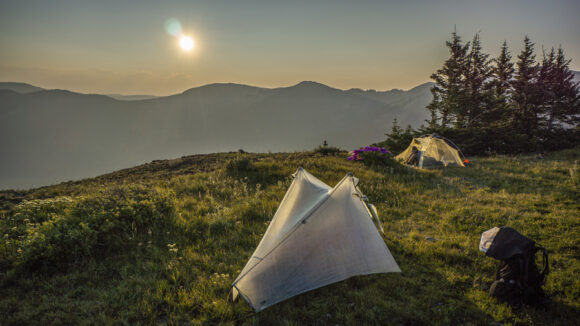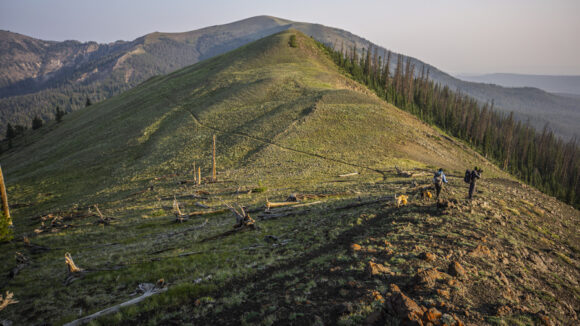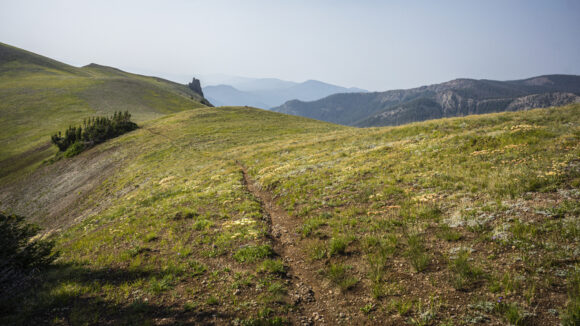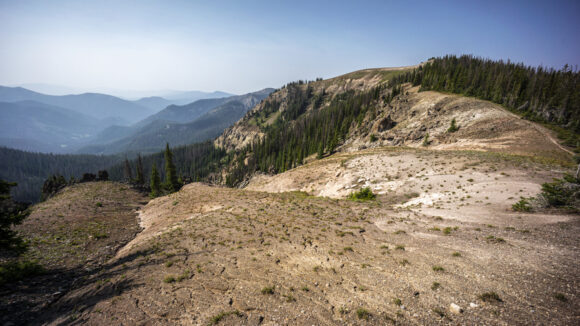CDT Section Hike 2021 – Never Summer Wilderness & Parkview Mountain
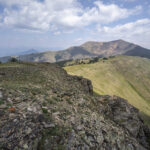
CDT Section Hike August 2021 – Rocky Mountain National Park, Never Summer Wilderness & Parkview Mountain, Colorado
-
- Hike Location – Rocky Mountain National Park, Never Summer Wilderness & Parkview Mountain, Colorado
- Land Administration – National Park, National Forest
- Hike Type – Point to Point
- Fees & Permits – No fees or permits needed (unless camping overnight in RMNP)
- Start Trailhead – Shadowcliff Hostel, Grand Lake
- End Trailhead – Forest Rd 104
- Length Of Time Hiked – 3.5 Days
- Miles Hiked – 60
- Route Difficulty – 4.5
- Scenic Beauty – 7.5
- Solitude – 8
Pre-Hike Planning Notes
I’ll be joining my friends Alex Maier and Amy Robin on their 2021 CDT thru hike as they walk from Grand Lake to Steamboat Springs. I’ve hiked this before myself on my 2018 CDT thru hike, and know it probably isn’t the highlight of the CDT. But, I wanted to join Alex and Amy for a section of hiking this summer and logistically, this is where it worked out for us both. I’ll have a friend pick me up along FR 104, south of Little Haystack Mountain. He’ll take me back to Grand Lake to get my van, where I parked it at the Shadowcliff Hostel, and I’ll follow him back to his place in Colorado Springs afterwards.
You’ll need a permit if you plan on camping overnight in Rocky Mountain National Park. But the RMNP section is only a few hours walk out of Grand Lake, and much of it has been burned recently in a fire, so you wouldn’t want to camp here anyways. Recent fires have also burned sections of the CDT south of Parkview Mountain. Much of this section has good trail and is a relatively easy hike.
Map of my CDT Section Hike:
Caltopo map of my CDT section hike from Grand Lake to, well, not quite Steamboat Springs
Download GPX file of this hike
Video: CDT Section Hike: Grand Lake to Steamboat Springs, Colorado
Day 1 – August 2nd, 2021
Miles Hiked – 12.92
Elevation Gain – 2973′
Route Hiked – Grand Lake to Upper Bowen Gulch
Let me start by backing up a bit. Two nights ago, my friends Alex Maier and Amy Robin hiked into Grand Lake. They have been hiking since April on the Continental Divide Trail, having started at the border of Mexico and New Mexico. This puts them roughly 1300 miles into their hike, with another 1700 remaining to the border of Canada. I completed the CDT in 2018, and now it’s my privilege to join Alex and Amy for a section of their hike this year. I had been touring the west for the past 6 weeks in my newly built camper van, and it’s here in northern Colorado that our paths cross this summer.
Alex is a documentary film marker, best known for his “Figure It Out On The Hayduke” movie. I really enjoyed Alex’s take on the benefits of being in the wilderness, and his ability to put profound concepts into clear, distinct words. So I was very interested in his latest project, “Mind Body Soul“. This project follow Alex and Amy’s 3,000 mile hike on the Continental Divide Trail, with a goal of exploring the effects hiking has on the mind, body and soul. Alex also has a youtube channel called Wilderness Mindset, where he shares high quality videos of his outdoor adventures and thru hikes.
We started the hike out of Grand Lake at Shadowcliff Hostel. Alex and Amy are also hiking with their two service dogs, Echo and Minnow. From here it’s a short walked through some burned forest. This had all burned since my visit here in 2018 on my CDT thru hike. The route I took before had us continuing north for a few more miles, but the trail was closed and we had to detour west. This led us back to HWY 34, the main road north/south running road in the area. And now it’s a few miles of road walking through Rocky Mountain National Park.
North of Onahu Trailhead, we leave the paved road for a dirt one. Life is suddenly more quiet and calm away from the traffic. We cross the Colorado River here, not all that far from its headwaters just 10 miles away, as the crow flies. We stop here for a lunch break along the banks of the river. This is nice. This brings back memories.
We leave the Colorado River behind and hike towards Bowen Gulch. We hike uphill though the the forest for a while and enter the Never Summer Wilderness. The trail is good and the grade is excellent for those long, continuous pushes uphill. This makes a 2,000ft climb like this one much easier.
The trees break as we reach the upper Bowen Basin area. We see a few moose in the area, and I remember seeing them here in 2018 too. This is their turf.
We found a pretty nice campsite with good tree cover not far off trail. The clouds moved in and out rapidly as the evening progressed.
Day 2 – August 3rd, 2021
Miles Hiked – 13.75
Elevation Gain – 2411′
Route Hiked – Upper Bowen Gulch to Willow Creek Pass
Last night we had a lot of animal activity. By the sound, they were large animals, and they were close by. We assumed moosr, since we saw several in the area lst night, and there were little trails leading through our general campsite area. One animal was probably only 4ft from my tent at one point.
After leaving camp, we still had a few hundred feet left to climb to reach the top of Bowen Pass. We saw a few more moose down lower in the valley. They really like this area.
West side of Bowen PassThe top of Bowen Pass was a bit of a let down, with all the fog around. This pass separates the Arapaho National Forest and Route National Forest though, so that’s something.
On the way down form Bowen Pass, we stop at a small creek for water. I remember stopping here for water too on my 2018 hike. I don’t remember the miles ahead being very memorable, though.
My memory served me right; the rest of the day was not that interesting. It had been raining on and off today, quite a bit in the afternoon. We were pretty wet and when we stopped, it was cold. We kept our breaks short and kept moving.
Later this afternoon, we hiked through several large burn areas. I didn’t take any photos here, apparently. It was pretty bleak looking, but very easy to walk. The terrain was pretty open and free of vegetation, and some erosion was starting to occur as a result.
We found camp above Willow Creek Pass. Nothing special, but campsites on the CDT seldom seemed special to me. This fits my recollection of CDT camping perfectly; a subpar campsite that looks a lot better at the end of a long day.
Day 3 – August 4th, 2021
Miles Hiked – 14.26
Elevation Gain – 4523′
Route Hiked – Willow Creek Pass to Poison Ridge
We got clobbered with rain last night. It was coming down heavily. Probably heavier than any single rain event on my entire CDT thru hike in 2018. But it barely rained at all on my 2018 hike. Now, I’m getting the full Colorado experience here.
We pack up camp wet this morning and hit the soggy trail. We emerge from the forest and find ourselves at the bouldery base of Parkview Mountain. We skirt this base and begin our ascent of Parkview as we punch through the clouds.
The weather is weird today; low clouds that rapidly come and go, alternating periods of high winds and total silence. Once we gain the crest of our first ridgeline, we get above the clouds for the first time. Well, we’re hiking in them now, too. It’s sunny and clear blue skies one minute, and within seconds, a big cloud blows in and visibility goes down to mere feet. It’s wild, and pretty damn cool.
The hike up the ridgeline is great. I enjoyed it in 2018, when the views were wide open and vast. But I enjoyed this more. Alex and Amy hadn’t had any days like this either on their CDT hike this year up to this point.
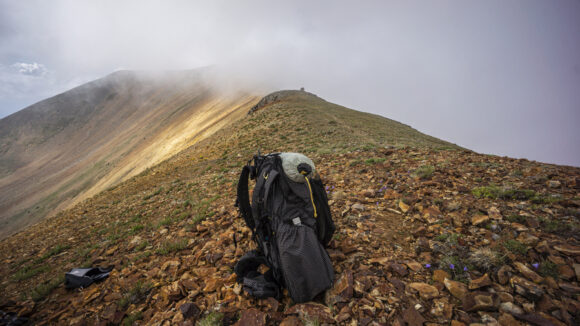
Optimism has my tent on the outside of my pack today, hoping it will dry out after last night’s rain
Conditions continue to change second by second and keep us on our toes. But, there seems to be no threat of rain. We take our time heading up the mountain now, as the 3 of us are all photographers. We are sidetracked with the constantly changing lighting, mood and landscapes!
We reach the summit of Parkview Mountain mid-day. For northbound CDT thru hikers, Parkview Mountain is the last 12k peak they will encounter. Unless you do the Wind River Range High Route alternate, and you’d be a FOOL not to! Just saying. We take lunch inside the shelter and enjoy the wind break. I’m sure the rodents would be an issue if one tried sleeping in here. The dogs were going nuts trying to get at them while they scurried around underneath the shelter.
We begin the descent down Parkview Mountain by doing exactly what I did in 2018; taking a wrong turn here and walking down the obvious looking ridgeline. While there is good trail leading this way, and good views too, the correct route was to take the ridge to the west. This was a dumb mistake, and even dumber because I made it twice.
Back on trail now, CDT signs and posts lead the way. The hiking here is excellent, just as I remembered it from 2018. It’s not the most scenic place you’ve ever been, but it has a simple beauty to it. It’s mot going to wow you, but it’s extremely pleasant. You just feel good being here.
We get some distance from Parkview Mountain and watch it become smaller on the horizon. It’s also an excellent backdrop now to the scenic ridge we’re hiking.
Next, we hike around Haystack Mountain. The trail drops down off the ridgeline about 450ft and contours around the east side of Haystack at the 10,200 mark. This section had a few downed trees and minor obstacles, but nothing too bad.
We cross Troublesome Pass and keep hiking towards Poison Ridge. The sun is getting lower in the sky and it’s time for camp. We find a pretty nice spot with an elevated view over Sheep Creek. With the full sun of the afternoon, we have been able to fully dry out our gear. What a great end to a day that started out wet and dreary.
Day 4 – August 5th, 2021
Miles Hiked – 15.47
Elevation Gain – 3075′
Route Hiked – Poison Ridge to FR 104
This morning’s hike was nice. Clear skies and sun, good trail and good views. Again, this area is not spectacular. But it’s enjoyable. I felt good being here. However, today is the day I’ll meet up with my friend who will pick me up somewhere along FR 104. And so, after a few hours, I say goodbye to Alex and Amy and hike ahead. I’m slightly behind schedule now, and increase my pace to make up for the time. I don’t want to keep my friend waiting any longer than he has to, he drove quite a long ways to meet me out here.
The ridgeline hike continues to be enjoyable. Eventually though, it’s time to drop down to Middle Fork Arapaho Creek near Hyannis Peak. It’s here that I run into another moose along the trail. Fortunately he went on his way, and I could keep running down the trail. And that’s what I was doing now, jogging where possible.
I climb out of Middle Fork Arapaho Creek to the ridge on the south side of the canyon. This is FR 104, the 4×4 road I have been shooting for. The spot my friend and I chose was a little farther downhill, so head that way. The road looks pretty good here, but I have a feeling it’s rough lower down the mountain. I get a brief moment of cell service and call him. He’s about 6.5 miles downhill from here, but the road is really rough. I get going to try and knock out these final miles as fast as possible.
I hike another hour or so, and was surprised to see my friend’s Subaru coming uphill. He was able to keep driving since our last call, but as rough as the road was here, I was not expecting him at all. So that saved me about 3 miles of the 6.5. But I would not recommend driving on this road without a high clearance vehicle!
That’s it for this hike. What’s next? I have a killer Wind River Range hike planned for next week!
Planned Hike – Maroon Bells Wilderness, CO
All summer I have been planning a trip to Isle Royale National Park, an island in Lake Superior, Michigan. For years, I’ve been wanting to go and hopefully catch a glimpse of the Northern Lights, which can be seen here with great clarity. Actually, I haven’t done much “planning” until recently, just thinking about it and putting it off. Two weeks ago I started planning the trip and by the time I called to make reservations on the ship that takes you to the island, they were booked the day I wanted to leave. Sure, I could have switched my dates around, but then that was going throw off my entire plan. To hike here, there are 3 things that need to fall into place. One, the ship that takes you to the island. Secondly, there’s a ship that circles the island. Unless you plan on hiking a 90+ mile loop, you will need to catch this ship at one end of the island to take you back to the end that you started from, so a different ship can take you back home. The third thing is lodging. I was going to leave from Copper Harbor, a very small town with only a handful of small motels which can easily be booked up this time of year. July 15th – August 15th is the most popular time to visit IR, and for some reason I just kept putting off the planning of this trip and pushed aside my fears that something wasn’t going to be available during my intended dates. Sure enough, my plans to visit Isle Royale have been thwarted yet again, for a third year in a row.
Where to now? Well, the place I had my heart set on in May is looking like a prime destination this time of year… Maroon Bells Wilderness in Colorado. When I was planning my hike in May, I really wanted to go here, but there is just too much snow still at that time of the year and I was told that mid June or later is best. I ultimately ended up in the Gila Wilderness of New Mexico as it was one of the highest elevations I could find that was not still snowed in. Now, late July/early August is looking like the perfect time to go to Maroon Bells!

Snowmass Mountain reflection in Snowmass Lake – Photo by Jack Brauer
I have chosen the Four Pass Loop as it has outstanding reviews from those who have hiked it. Here you will find the most photographed mountains in Colorado, the Maroon Bells. The scenery is absolutely stunning from the pictures, which never do any justice once seen in person.
I plan on hiking the Four Pass Loop in a clockwise direction. Here’s the intended itinerary thus far:
Day 1 – Maroon Creek Rd. trailhead to camp on east side of West Maroon Creek around 10,800 ft (4-5 miles)
Day 2 – Camp to Fravert Basin (6-7 miles)
Day 3 – Fravert Basin to Snowmass Lake (7-8 miles)
Day 4 – Summit Snowmass Lake
Day 5 – Snowmass Lake to Crater Lake (6 miles)
Day 6 – Crater Lake to trailhead (2 miles)
Total miles hiked should be around 25-29 miles, not including the summit of Snowmass Mountain. Sure, this trip could be done in 2-3 days, but I am driving 1400+ miles to get here, so why blow past it all in such a short time? I want to hike a few miles a day and have the rest of the day to fish and relax at camp, and play with my new DSLR camera, a Sony Nex-5. Photography beyond “point and shoot” is something new to me, so it’s definitely a learning experience. I bought a bunch of filters for it and have been reading up on outdoor photography, so hopefully I can capture a few good shots.
I will be staying in the Denver area the night before at around 5400ft elevation. I live at 600ft elevation, so I hope one night here is enough acclimation time. The trailhead elevation is around 9500 ft elevation, and I plan on hiking to about 10,800ft our first day. I am hoping this is not too elevation gain in one day without being acclimated a night at 7,000ft or more. I know when I was in New Mexico in May (Gila Wilderness), I had absolutely no problems at 10,600ft after camping 2 nights at 6,800ft, but I am bringing my girlfriend on this trip though and I don’t know how she will react to the elevation.
Hiking the trail in a clockwise direction will also give us a few days at elevation to acclimate before attempting to summit Snowmass Mountain on day 4. Snowmass Mountain is the 32nd highest peak in Colorado at 14,098ft. It doesn’t sound impressive when referred to as the 32nd highest, but that’s just a testament to the abundance of 14’ers in Colorado, which has 53 peaks over 14,000ft! This will be my first 14er (or 11er, 12er, and 13er for that matter), so needless to say I am excited as hell for this trip. So excited that I am not even missing the idea of Isle Royale anymore! Of course I still want to go, but that will be a trip for another time in the future.
I am leaving in about 10 days, so expect a full trip report in a few weeks.
[tcb_comment_count]



